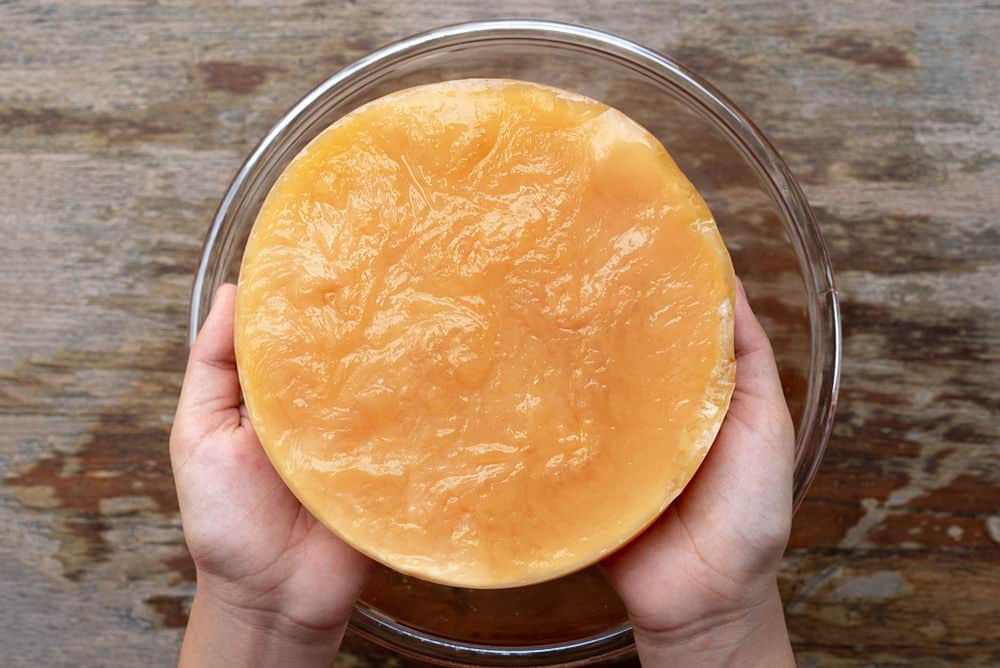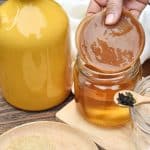
In many instances you can get SCOBY of a friend or a family member or purchase it online from a reputable retailer. You can also grow a SCOBY from a bottle of commercial raw kombucha at your home. Growing your own SCOBY is not a fast process however, it is relatively simple.
Have you tried to grow your own SCOBY?
Print
Kombucha SCOBY Recipe
- Total Time: 10 minutes
- Yield: Makes 1 Kombucha SCOBY 1x
Description
Kombucha SCOBY is a starter culture which is necessary for brewing kombucha. SCOBY (Symbiotic Culture of Bacteria and Yeast) is a combination of bacteria and yeast existing in a symbiotic relationship.
Ingredients
- 250ml of original raw commercially brewed kombucha
- 250ml of filtered water
- 1 bag of organic black tea
- 2 teaspoons of raw (organic) white sugar
Instructions
- Make a cup of organic black tea and add 2 spoons of raw (organic) white sugar. Stir the sugar with a wooden spoon until the sugar dissolves completely. Let the tea cool down on the room temperature.
- In a glass jar pour the bottle of kombucha and the cup of black tea. Stir the contents with a wooden spoon.
- Cover the jar with a cheesecloth or tea towel. Secure the covering with a rubber band.
- Leave the jar on the countertop on the room temperature for a week before having a sneak peak.
- After the first week you will notice SCOBY looks like a clear film or blob then slowly becomes less translucent and gets thicker as time goes on. Wait until SCOBY is around 1/4-inch thick before using it to brew the kombucha tea.
Notes
Equipment: glass jar, wooden spoon, cheesecloth or tea towel, and rubber band
*If you do not see any signs of SCOBY development after the first three weeks we suggest you discard the batch and start over again. While the SCOBY is growing watch for any mold. If mold develops, discard the batch and start the process all over again.
- Prep Time: 10 minutes

This is interesting. I’m going to try making my scoby.
My kombucha addiction is hurting my pocket!
Did you really mean 5 cm thick? Is that a typo or is a 2-inch thick SCOBY what I should be shooting for?
Sorry Gary, that was a typo which I’ve corrected now. It meant to read 0.5cm or approx 1/4 inch.